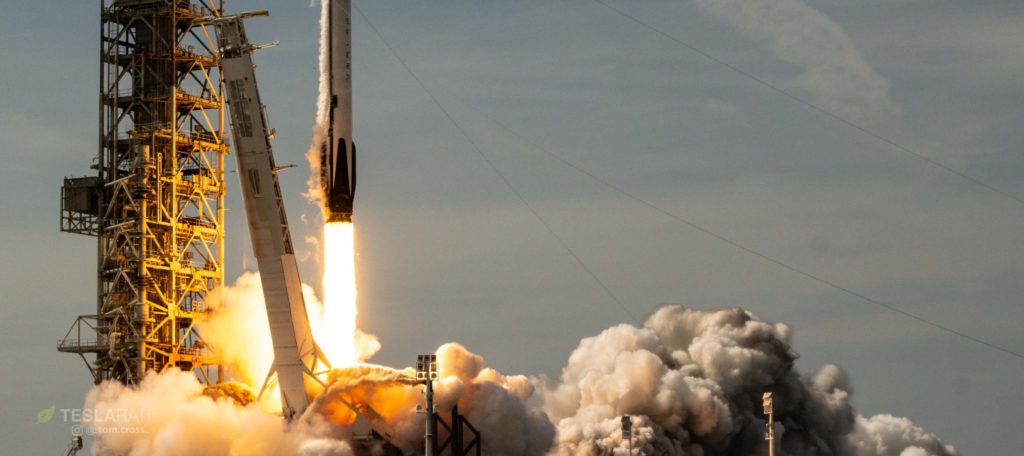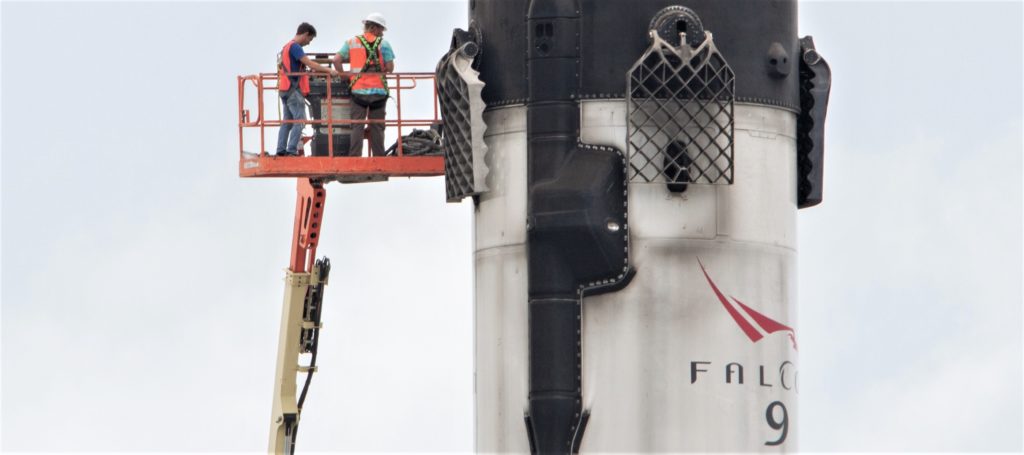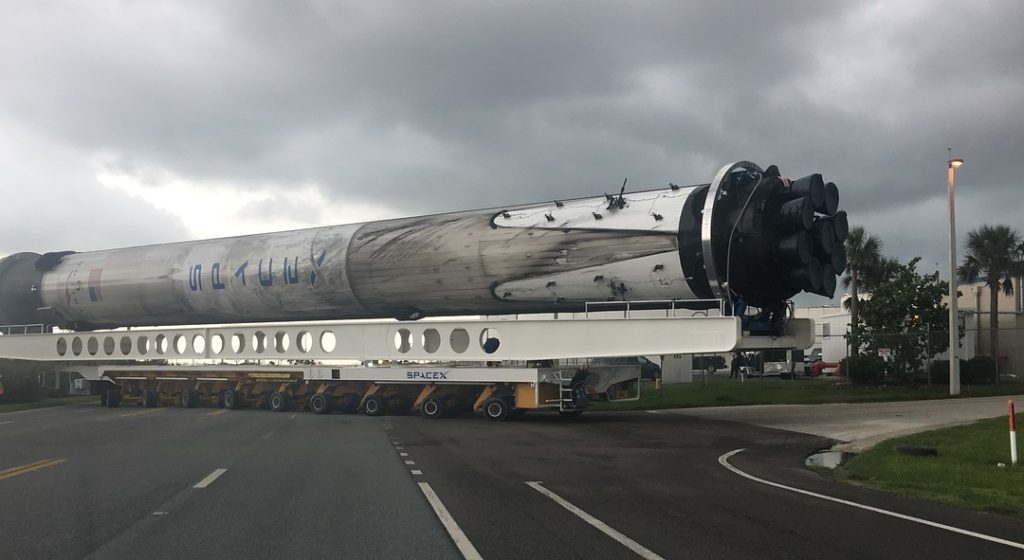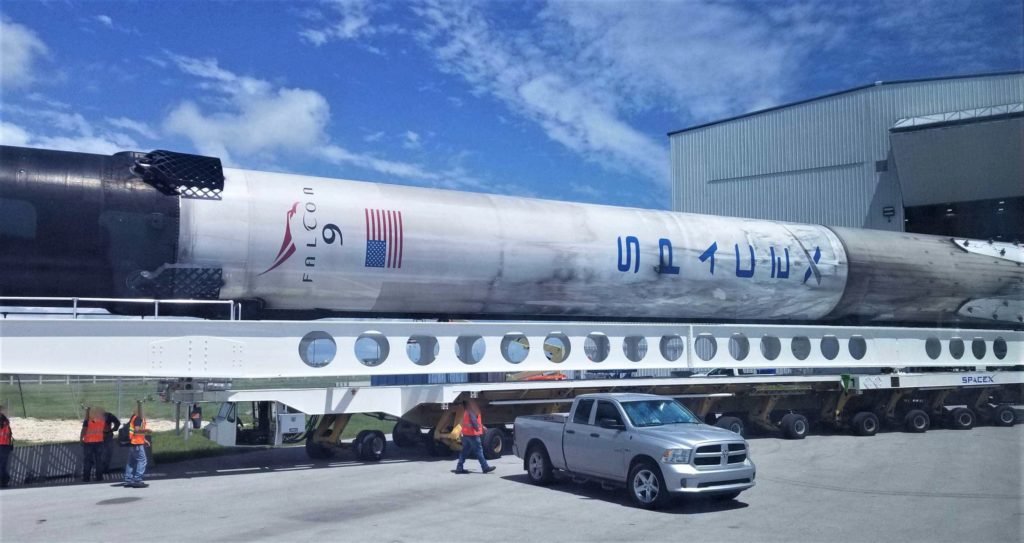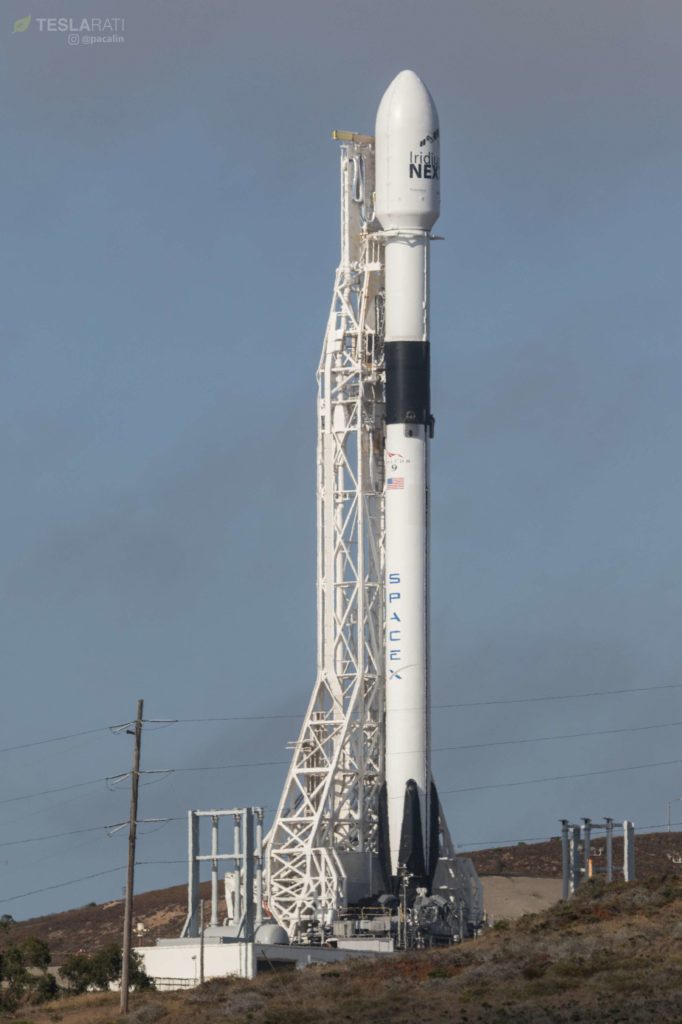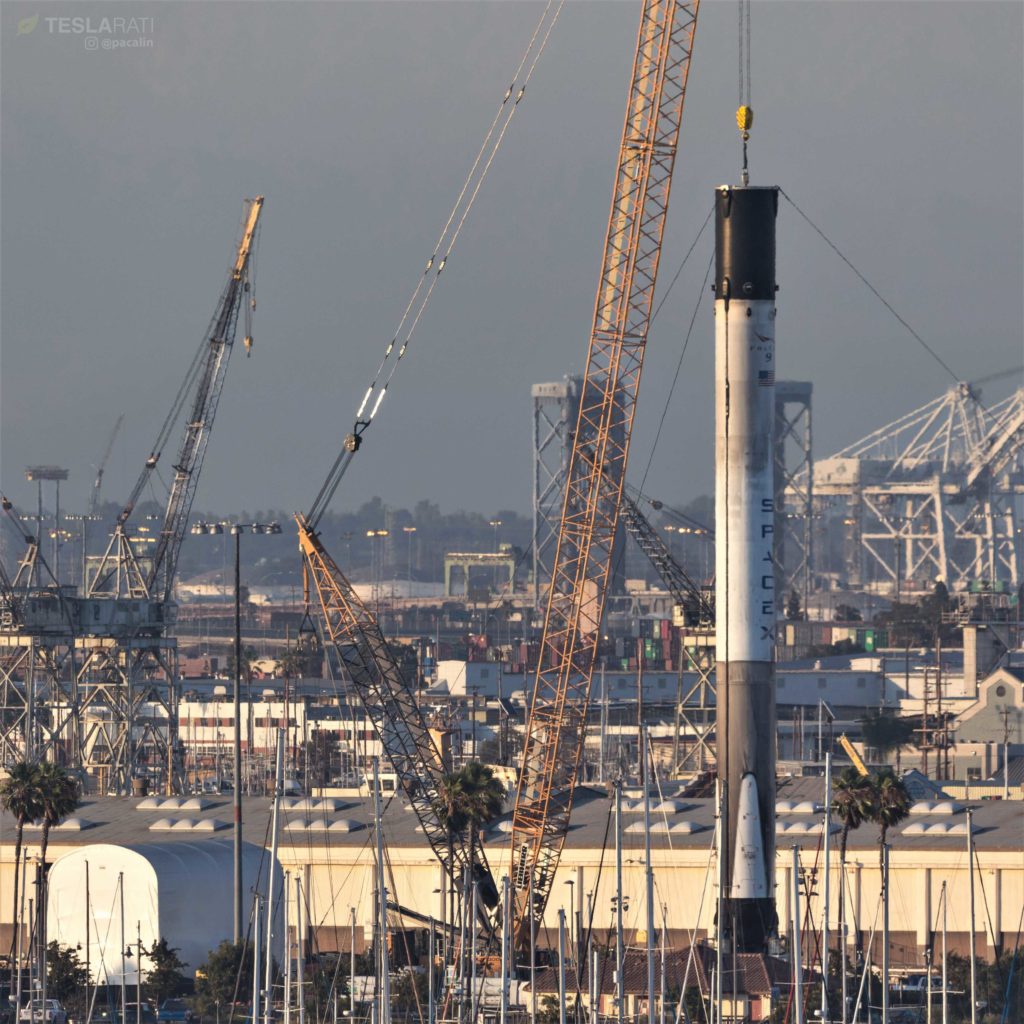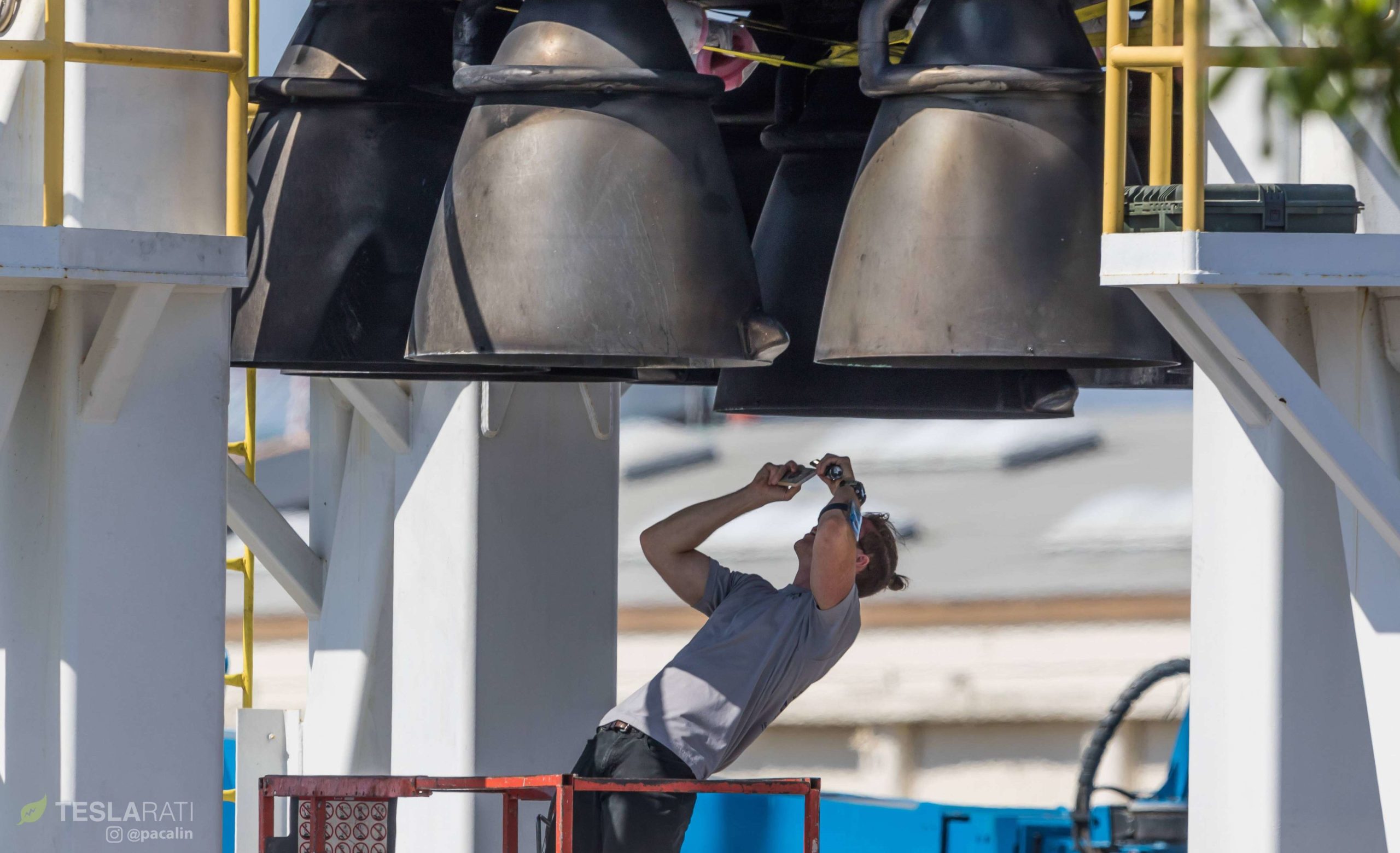
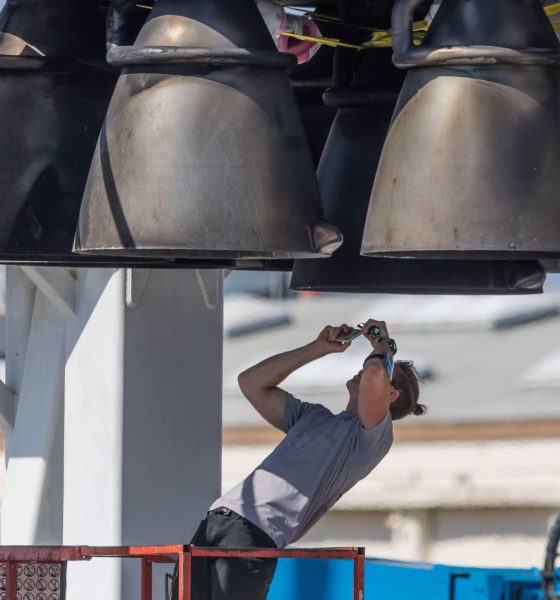
News
SpaceX set to launch its first previously-flown Block 5 rocket tonight
At the same time as SpaceX is readying its first Falcon 9 Block 5 booster reuse, the company’s second flight-proven Block 5 launch is already fast approaching and could be a strong contender to beat the company’s record of 72 days between launches of the same rocket.
A critical milestone for Falcon 9 Block 5
Formerly known as Telkom 4, SpaceX’s 1:18 AM EDT August 7th launch of the Merah Putih (Red and White in Indonesian) communications satellite will place the 5800 kg (12,800 lb) craft into a high-energy geostationary transfer orbit and will become the second heaviest GTO launch completed by SpaceX while still recovering the Falcon 9 booster. More importantly, however, Telkom 4 will also mark a critical milestone for Falcon 9 as the first reuse of a Block 5 booster.
https://twitter.com/_TomCross_/status/1025074341040533504
Designed to be many times more reusable and reliable than the already impressive Falcon 9 Full Thrust iterations preceding it, pathfinder booster B1046 could be capable of flying anywhere from 5, 10, or even 100 launches over the course of its flightworthy lifespan. It very well may require some considerable refinements to approach the true goal of orbital Falcon 9 launches with zero refurbishments between flights. CEO Elon Musk discussed those aspirations just before Block 5’s launch debut on May 11:
“We need to basically take the rocket from its landing pad, rotate it horizontal, stow the legs. Take it to the launch pad, attach an upper stage, attach a fairing with a payload. Then transport it out the launch pad, rotate it vertically, load propellant, and fly. And in principle, that is literally all that’s necessary.” – Elon Musk
This is understandably SpaceX’s goal, and it’s unlikely to happen just a few months after Block 5’s debut. Nevertheless, SpaceX appears to be already pushing the envelope of what they’ve previously accomplished with reusable Falcon 9s.
- B1046 lifts off for the first time on May 4th, 2018. (Teslarati)
- Falcon 9 B1046 returned to Port Canaveral aboard drone ship OCISLY on May 15. It will launch for the second time on August 4. (Tom Cross)
- Soon after, B1046 was spotted on its way to a refurbishment facility around a week after its May 11 launch debut. (Instagram /u/tersco)
Breaking records four months after launch debut
While B1046 is tracking towards a booster turnaround of roughly 92 days, compared with the current Block 4 booster record of 72 days, it’s worth noting that more than a majority of that time was likely spent in a state of unique analysis for the inaugural Block 5 rocket, involving extensive disassembly. As stated by Musk, “we need to take [B1046] apart to confirm that it does not need to be taken apart.” He also expected that teardown analysis to be “very rigorous”, indicating that B1046 probably deserves the crown for booster turnaround so long as one only accounts for time spent in transport and undergoing refurbishment.
Still, winning by a technicality is never any fun. On that note, SpaceX appears to be tracking towards a true record-breaking rocket reuse, potentially as few as 40 days between launches. Not one to let its other launch facilities be left out, this record-breaking turnaround attempt will occur on the West Coast with Falcon 9 B1048, the recovery of which has been extensively documented by Teslarati photographer Pauline Acalin over the last two weeks. NASASpaceflight.com confirmed that SpaceX intends to reuse B1048 for this mission for the NET mid-September launch and the record ~50 days between flights could help explain an unusually extensive and lengthy analysis of the rocket after it was lifted off drone ship Just Read The Instructions and placed on its dockside recovery stand.
- B1047 before the launch of Telstar 19V. (Tom Cross)
- Sooty B1047 arrives at Pad 39A’s horizontal integration facility (HIF), July 31st. (Reddit – Kent767)
- Falcon 9 B1048 ahead of its launch debut, July 25th. (Pauline Acalin)
- After a successful launch and landing, B1048 stands tall in Port of San Pedro before being lowered and transported for its next launch. (Pauline Acalin)
After 10 days of recovery operations and analysis, B1048 was transported to SpaceX’s Hawthorne factory on August 6th, where it will presumably undergo refurbishment in preparation for its next launch. If B1046 and B1048 are representative samples of SpaceX’s growing rocket fleet, their stunningly quick turnarounds (especially for a largely new rocket that debuted less than 3-4 months prior) are likely a sign of things to come as SpaceX gets a handle on the real-world capabilities of its robust Block 5 upgrade.
It’s entirely possible that every Block 5 reuse to come can and will break the previous launch turnaround record, at least up to the point that SpaceX demonstrates a true 24-hour turnaround sometime next year. Stay tuned…
For prompt updates, on-the-ground perspectives, and unique glimpses of SpaceX’s rocket recovery fleet (including fairing catcher Mr Steven) check out our brand new LaunchPad and LandingZone newsletters!

News
Tesla FSD fleet is nearing 7 billion total miles, including 2.5 billion city miles
As can be seen on Tesla’s official FSD webpage, vehicles equipped with the system have now navigated over 6.99 billion miles.

Tesla’s Full Self-Driving (Supervised) fleet is closing in on almost 7 billion total miles driven, as per data posted by the company on its official FSD webpage.
These figures hint at the massive scale of data fueling Tesla’s rapid FSD improvements, which have been quite notable as of late.
FSD mileage milestones
As can be seen on Tesla’s official FSD webpage, vehicles equipped with the system have now navigated over 6.99 billion miles. Tesla owner and avid FSD tester Whole Mars Catalog also shared a screenshot indicating that from the nearly 7 billion miles traveled by the FSD fleet, more than 2.5 billion miles were driven inside cities.
City miles are particularly valuable for complex urban scenarios like unprotected turns, pedestrian interactions, and traffic lights. This is also the difference-maker for FSD, as only complex solutions, such as Waymo’s self-driving taxis, operate similarly on inner-city streets. And even then, incidents such as the San Francisco blackouts have proven challenging for sensor-rich vehicles like Waymos.
Tesla’s data edge
Tesla has a number of advantages in the autonomous vehicle sector, one of which is the size of its fleet and the number of vehicles training FSD on real-world roads. Tesla’s nearly 7 billion FSD miles then allow the company to roll out updates that make its vehicles behave like they are being driven by experienced drivers, even if they are operating on their own.
So notable are Tesla’s improvements to FSD that NVIDIA Director of Robotics Jim Fan, after experiencing FSD v14, noted that the system is the first AI that passes what he described as a “Physical Turing Test.”
“Despite knowing exactly how robot learning works, I still find it magical watching the steering wheel turn by itself. First it feels surreal, next it becomes routine. Then, like the smartphone, taking it away actively hurts. This is how humanity gets rewired and glued to god-like technologies,” Fan wrote in a post on X.
News
Tesla starts showing how FSD will change lives in Europe
Local officials tested the system on narrow country roads and were impressed by FSD’s smooth, human-like driving, with some calling the service a game-changer for everyday life in areas that are far from urban centers.

Tesla has launched Europe’s first public shuttle service using Full Self-Driving (Supervised) in the rural Eifelkreis Bitburg-Prüm region of Germany, demonstrating how the technology can restore independence and mobility for people who struggle with limited transport options.
Local officials tested the system on narrow country roads and were impressed by FSD’s smooth, human-like driving, with some calling the service a game-changer for everyday life in areas that are far from urban centers.
Officials see real impact on rural residents
Arzfeld Mayor Johannes Kuhl and District Administrator Andreas Kruppert personally tested the Tesla shuttle service. This allowed them to see just how well FSD navigated winding lanes and rural roads confidently. Kruppert said, “Autonomous driving sounds like science fiction to many, but we simply see here that it works totally well in rural regions too.” Kuhl, for his part, also noted that FSD “feels like a very experienced driver.”
The pilot complements the area’s “Citizen Bus” program, which provides on-demand rides for elderly residents who can no longer drive themselves. Tesla Europe shared a video of a demonstration of the service, highlighting how FSD gives people their freedom back, even in places where public transport is not as prevalent.
What the Ministry for Economic Affairs and Transport says
Rhineland-Palatinate’s Minister Daniela Schmitt supported the project, praising the collaboration that made this “first of its kind in Europe” possible. As per the ministry, the rural rollout for the service shows FSD’s potential beyond major cities, and it delivers tangible benefits like grocery runs, doctor visits, and social connections for isolated residents.
“Reliable and flexible mobility is especially vital in rural areas. With the launch of a shuttle service using self-driving vehicles (FSD supervised) by Tesla in the Eifelkreis Bitburg-Prüm, an innovative pilot project is now getting underway that complements local community bus services. It is the first project of its kind in Europe.
“The result is a real gain for rural mobility: greater accessibility, more flexibility and tangible benefits for everyday life. A strong signal for innovation, cooperation and future-oriented mobility beyond urban centers,” the ministry wrote in a LinkedIn post.
News
Tesla China quietly posts Robotaxi-related job listing
Tesla China is currently seeking a Low Voltage Electrical Engineer to work on circuit board design for the company’s autonomous vehicles.

Tesla has posted a new job listing in Shanghai explicitly tied to its Robotaxi program, fueling speculation that the company is preparing to launch its dedicated autonomous ride-hailing service in China.
As noted in the listing, Tesla China is currently seeking a Low Voltage Electrical Engineer to work on circuit board design for the company’s autonomous vehicles.
Robotaxi-specific role
The listing, which was shared on social media platform X by industry watcher @tslaming, suggested that Tesla China is looking to fill the role urgently. The job listing itself specifically mentions that the person hired for the role will be working on the Low Voltage Hardware team, which would design the circuit boards that would serve as the nervous system of the Robotaxi.
Key tasks for the role, as indicated in the job listing, include collaboration with PCB layout, firmware, mechanical, program management, and validation teams, among other responsibilities. The role is based in Shanghai.
China Robotaxi launch
China represents a massive potential market for robotaxis, with its dense urban centers and supportive policies in select cities. Tesla has limited permission to roll out FSD in the country, though despite this, its vehicles have been hailed as among the best in the market when it comes to autonomous features. So far, at least, it appears that China supports Tesla’s FSD and Robotaxi rollout.
This was hinted at in November, when Tesla brought the Cybercab to the 8th China International Import Expo (CIIE) in Shanghai, marking the first time that the autonomous two-seater was brought to the Asia-Pacific region. The vehicle, despite not having a release date in China, received a significant amount of interest among the event’s attendees.
